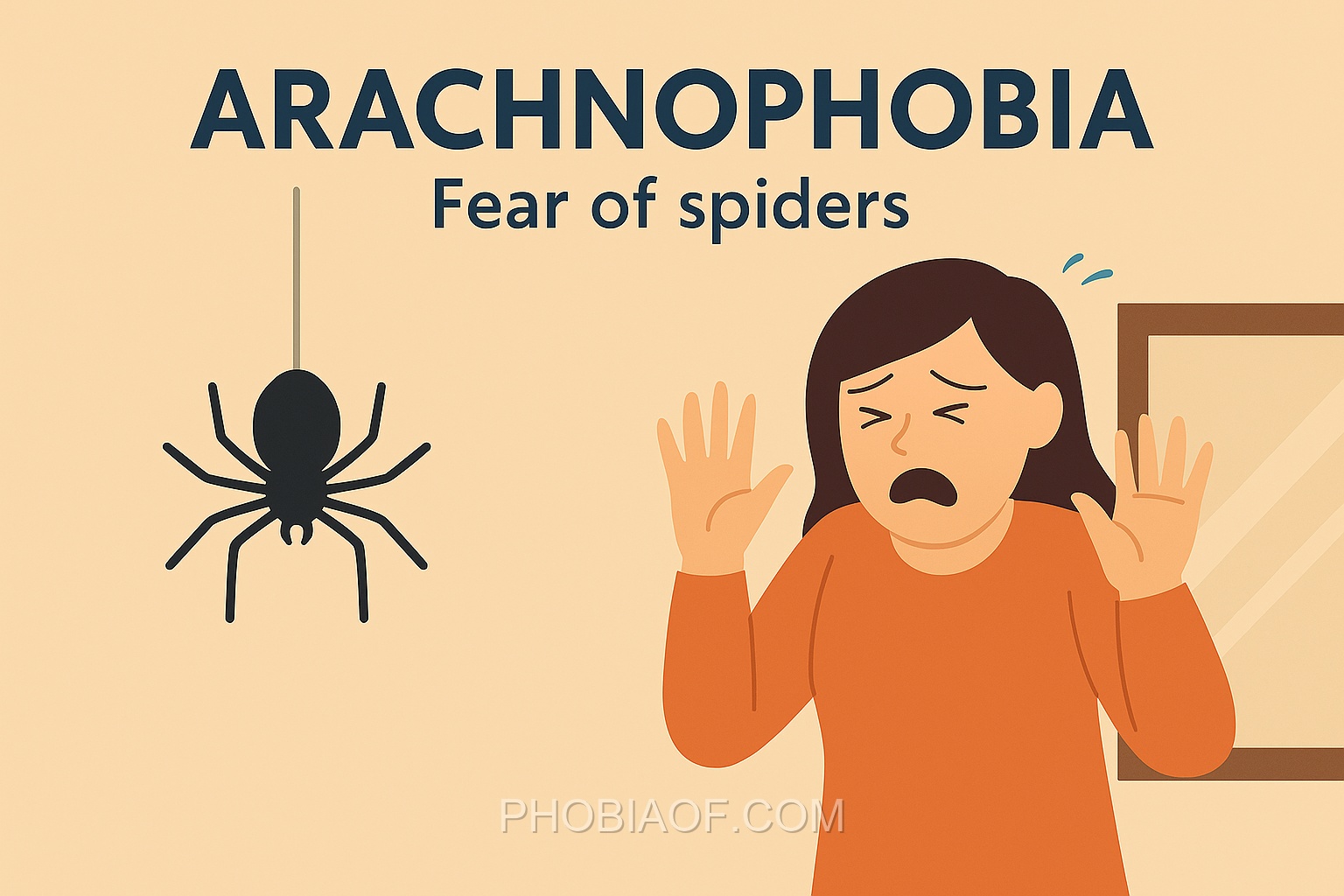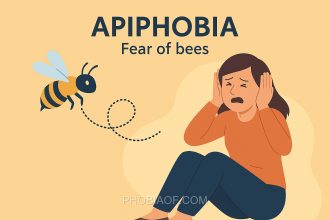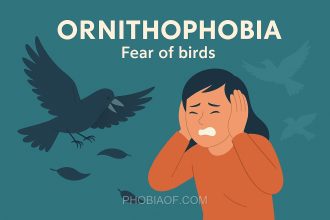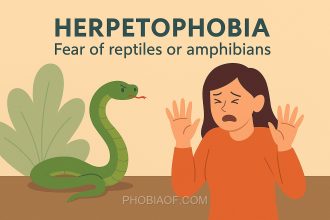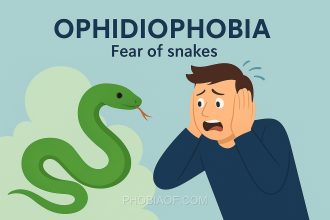Have you ever felt your heart race at the mere sight of a spider, even a tiny one? If so, you’re not alone. This intense fear is known as arachnophobia.
Arachnophobia is a term derived from the Greek words “arachne,” meaning spider, and “phobos,” meaning fear. In simple terms, it refers to an extreme or irrational fear of spiders. While many people find spiders unsettling, those with arachnophobia experience significant anxiety that can affect their daily lives.
For individuals with this phobia, encountering a spider can trigger a range of physical and emotional responses. Here are some ways it generally affects people:
- Elevated heart rate and sweating.
- Feelings of panic or dread.
- Avoidance of places or situations where spiders might be present.
- Difficulty concentrating on tasks if a spider is nearby.
Understanding this fear is the first step toward managing it. By recognizing the signs and seeking appropriate support, those with arachnophobia can begin to lead more comfortable lives. Remember, it’s okay to seek help, and you’re not alone in facing this challenge.
Causes of Arachnophobia
Arachnophobia, or the fear of spiders, is a common phobia that affects many people worldwide. Understanding the potential causes of this fear can help individuals address and manage it effectively. Several factors may contribute to the development of arachnophobia.
- Genetic Predisposition:Research suggests that genetic factors may play a role in the development of arachnophobia. Some studies indicate that a person may be more likely to develop this fear if they have family members who also experience phobias or anxiety disorders.
- Traumatic Experiences:Experiencing a frightening or traumatic event involving spiders can lead to a lasting fear. For instance, being bitten by a spider or witnessing someone else’s adverse reaction can trigger arachnophobia.
- Learned Behavior:Observing others who are afraid of spiders can influence an individual to adopt the same fear. This learned behavior often occurs in childhood, where a child might mimic a parent’s or sibling’s fearful reaction towards spiders.
- Psychological and Environmental Factors:Other psychological factors, such as a general tendency towards anxiety, can contribute to the development of phobias. Additionally, cultural influences and environmental factors, such as living in an area where dangerous spiders are common, can also play a role.
Interestingly, some theories suggest that arachnophobia might be an evolutionary adaptation. The fear of spiders could have helped early humans survive by avoiding potentially dangerous creatures. Although most spiders are harmless, this ingrained caution might still manifest as fear in some individuals today.
Symptoms of Arachnophobia
Arachnophobia, the intense fear of spiders, can manifest in various ways, causing significant distress to those affected. People with this phobia often experience overwhelming fear or anxiety at the mere thought of encountering a spider. Below are some common symptoms associated with arachnophobia:
- Intense Fear or Anxiety: A profound sense of dread or panic at the sight or thought of spiders.
- Panic Attacks: Sudden episodes of intense fear that may include chest pain, shortness of breath, or a feeling of losing control.
- Increased Heart Rate: A rapid heartbeat often accompanies the fear response.
- Sweating: Excessive perspiration triggered by anxiety or fear.
- Trembling or Shaking: Physical trembling that occurs when confronted with spiders or related stimuli.
- Nausea or Upset Stomach: Feelings of nausea or gastrointestinal distress when exposed to spiders.
- Shortness of Breath: Difficulty breathing or a sense of suffocation in response to spiders.
- Avoidance Behavior: Efforts to avoid places or situations where spiders might be present, disrupting daily activities.
- Overwhelming Dread: Persistent worry or preoccupation with the possibility of encountering a spider.
- Hypervigilance: Constantly being on alert for spiders, which can be exhausting and stressful.
If severe, these symptoms can significantly interfere with daily life, making it difficult for individuals to engage in routine activities or enjoy environments where spiders might be present.
Treatment for Fear of Spiders
Arachnophobia, the intense fear of spiders, can be a challenging experience, but it’s important to know that this phobia can be treated and managed over time. With the right approach, you can overcome this fear and regain control of your life. Let’s explore some proven treatment options and coping strategies that can help you on this journey.
Therapies for Arachnophobia
Several therapeutic approaches have been shown to be effective in treating arachnophobia. Consider the following options:
- Exposure Therapy: This therapy involves gradually and systematically exposing yourself to spiders in a controlled environment. The goal is to desensitize you to the fear by slowly increasing your exposure, starting with less threatening images or videos and eventually working up to real-life encounters. Over time, this can help reduce the fear response.
- Cognitive-Behavioral Therapy (CBT): CBT focuses on changing the negative thought patterns that fuel your fear. A therapist will work with you to identify and challenge these thoughts, replacing them with more rational and less fearful ones. This can help reduce the intensity of your fear reaction.
- Counseling: Speaking with a mental health professional can provide support and guidance as you work through your fear. Counseling can also help you understand the underlying causes of your phobia and develop strategies to manage it.
Self-Help Coping Techniques
In addition to professional therapy, there are several self-help techniques that can complement your treatment:
- Relaxation Exercises: Techniques such as deep breathing, progressive muscle relaxation, or yoga can help calm your body’s fight-or-flight response, reducing anxiety when faced with spiders.
- Meditation: Regular meditation practice can enhance your overall emotional resilience and help you maintain a sense of peace when dealing with your phobia.
- Support Groups: Connecting with others who share similar experiences can be incredibly reassuring. Support groups offer a space to share fears and coping strategies, reducing feelings of isolation.
Medication
In severe cases of arachnophobia, medication may be considered as a supplementary treatment. Anti-anxiety medications can help alleviate symptoms temporarily but are not a long-term solution. It’s important to focus on therapy and coping skills for lasting change.
If arachnophobia is interfering with your daily life, I strongly encourage you to seek professional help. A mental health professional can tailor a treatment plan to your specific needs, guiding you every step of the way. Remember, overcoming this fear is possible, and you don’t have to face it alone.
Conclusion
In understanding arachnophobia, the fear of spiders, it becomes evident that recognizing the causes and symptoms is crucial in addressing this common phobia. By identifying what triggers the fear and acknowledging its manifestations, individuals can take the first steps toward managing or overcoming their anxiety. Knowledge empowers, and with this understanding, one can begin to dismantle the fears that often feel insurmountable.
It is important to remember that many people successfully manage or even conquer their phobias over time, especially with the right support and strategies. Whether through gradual exposure, relaxation techniques, or professional guidance, there are numerous ways to cope with and reduce the impact of arachnophobia on one’s life.
Take heart in knowing that you are not alone on this journey. If you find that your fear of spiders significantly interferes with your daily life, consider reaching out for support. Therapy can provide a safe space to explore your fears and develop coping mechanisms. Don’t hesitate to talk to a doctor or mental health professional to explore your options.
With patience, perseverance, and support, overcoming arachnophobia is entirely possible. Embrace the journey to a more fearless future.
